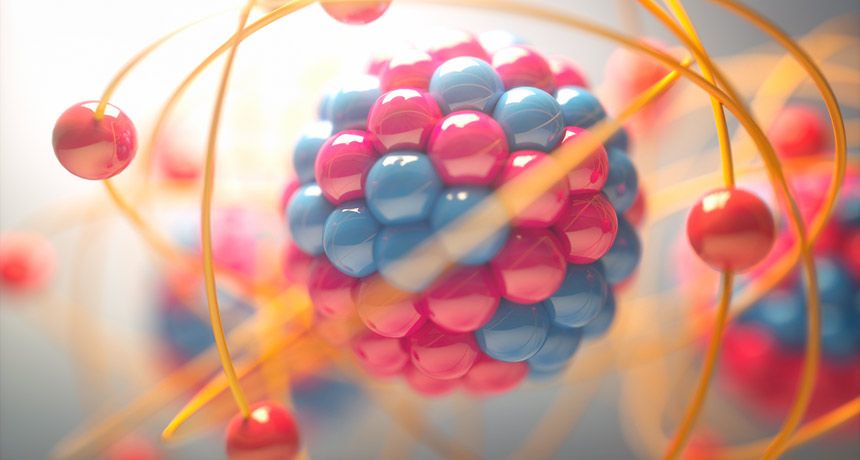A proton’s mass is more than just the sum of its parts. And now scientists know just what accounts for the subatomic particle’s heft.
Protons are made up of even smaller particles called quarks, so you might expect that simply adding up the quarks’ masses should give you the proton’s mass. However, that sum is much too small to explain the proton’s bulk. And new, detailed calculations show that only 9 percent of the proton’s heft comes from the mass of constituent quarks. The rest of the proton’s mass comes from complicated effects occurring inside the particle, researchers report in the Nov. 23 Physical Review Letters.
Quarks get their masses from a process connected to the Higgs boson, an elementary particle first detected in 2012 (SN: 7/28/12, p. 5). But “the quark masses are tiny,” says study coauthor and theoretical physicist Keh-Fei Liu of the University of Kentucky in Lexington. So, for protons, the Higgs explanation falls short.
